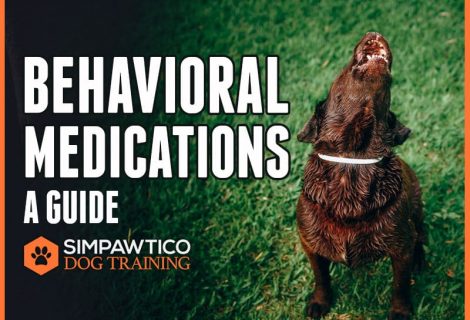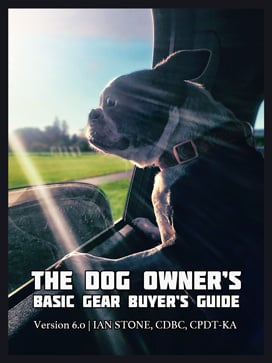9 Tips for Living With a Dog – Foundations for Dog Owners
Many people in the education world are probably familiar with the work of Harry Wong, a nationally known educator, and speaker. His book The First Days of School is a staple of educator workshops and seminars. I had the pleasure of seeing Harry Wong speak live a long time ago when I taught in Phoenix.
Recently I happened upon an old copy of Mr. Wong’s book in the basement and flipped through it with a chuckle. However, I began reading it through a dog trainer’s eyes and I was gobsmacked at how relevant much of the information was!
I’ve often said to my human students in training classes that it’s useful in many instances to visualize your dog as a kid in that they need many of the same things a kid does to thrive. When I read Mr. Wong’s book from the angle that we were talking about dogs rather than children, some really good stuff came out of it.
Now I know this is gonna set some people off.
I know there are going to be a ton of readers and viewers out there that will immediately go, “A dog’s not a human! You can’t treat them like a person.” I know. Not only is that obvious, but that’s not really what I’m saying. What I’m trying to help you do here is to get your mindset right, and to understand that despite being different species there are, nonetheless similarities. We’ve coexisted together for nearly 20,000 years and consequently many of our behavior patterns have dovetailed together to some degree. There really is no other relationship between humans and animals, like it is with dogs.
In my experience as a dog trainer, a behavioral consultant, and as a dog owner myself, many of the concepts in a guide on effective education resonate true for educating dogs, with only some minor tweaks. Here I’ve collected nine of my favorite points from that book, and I’ve edited and adapted them for you, the dog parent:
#1: Effective owners manage their dogs; ineffective owners discipline their dogs
Most owners do not teach well enough, and they don’t have a well-thought-out plan. When problems arise resort to disciplining by yelling, scolding and punishing. While this may buy you momentary compliance, this is totally ineffective for long-term good behavior. And, it quickly erodes your relationship with your dog. It compromises trust, respect, and love.
The number one factor that leads to a happy home is management.
Effective dog owners: 1) have good management skills, 2) train for mastery, 3) have positive expectations for their dog’s success. Effective homes have rules, and procedures for almost everything. This is how you get long-term good behavior.
#2: The most important thing an owner can provide a dog is security
A well-managed home is a predictable environment. It’s not a guessing game. If you have to be giving your dog a stream of commands or reprimands, that means your dog doesn’t really know what they’re supposed to do. This uncertainty forms the basis for most behavior problems. Not knowing what to do is one of the most stressful things in the world for a dog. It’s as if you were forced to give a speech on a new topic with no notes. So dogs cope the only way they know how, and that’s usually by acting out.
#3: Home must be a safe and protected environment where a dog can come to learn without fear
We talked about this a bunch in one of our other posts/videos.
Dogs need to feel that their humans are in control and responsible for their environment. They need someone to sets limits and maintain them. We use rules to set limits. We use discipline plans to outline rewards and consequences. And we use procedures to make things go smoothly in the home without the need to discipline.
Dogs and their owners should not be afraid of failure; failure is how learning occurs. We must be supportive. You never, ever punish a dog in the learning phases. Any punishment you choose to deploy later must be fair, reasonable, and appropriate. And importantly: nobody cares whether YOU think it’s fair or reasonable. The only thing that matters is how your dog feels about it. Punishments that are painful or scary, or periods where stress is allowed to accumulate without an outlet will often cause behavioral fallout. You run the risk of learned helplessness, superstitious associations, generalized inhibition, and increased aggression.
Consult a trainer or behaviorist with questions you may have.
#4: The number one problem with dog behavior is not discipline, it is the lack of procedures and routines
As I said, most owners do not teach or practice enough; they do things with little forethought. Then when things go wrong, they discipline. A vast majority of the behavior problems in the home are simply caused by the failure of dogs to follow procedures and routines.
Well, mainly dogs don’t follow procedures because their owner hasn’t thought out the procedure. The owner hasn’t thought about what happens in a given scenario, and so they haven’t planned how to accomplish tasks or do things around the house. Thus, the dog has not been trained to follow the procedures, and the owner spends time chasing the dog around and trying to discipline them.
Look at it this way. To do anything in life successfully we simply follow procedures. It’s the same when we go get up in the morning, go to the grocery store, see a movie, get on the freeway, order a meal, start the car, pay bills, mow the lawn, etc.
Every time you want something done there must be a procedure or a set of procedures. For example, have procedures for:
- going outside to go potty
- getting in the car
- meal times
- getting hardware like leashes, collars, and harnesses on
- moving from area to area
- getting nails cut
- getting teeth brushed
- etc.
What are other things you need to accomplish in your home? Effective owners manage by implementing procedures.
#5: all procedures must be rehearsed
Have your dog practice a procedure, step by step. This will help you identify individual behaviors you need to teach your dog to be successful. Make sure your dog can perform each step correctly. If a procedure requires a sit-stay, make sure your dog knows how to sit-stay in that spot. If a procedure requires they go to a certain spot and take up a certain position, make sure they know that and have practiced that.
If you don’t rehearse and practice, time that should be spent on other things will be wasted just getting these simple things done. The reason that many owners cannot get their dogs to do things is that they just tell their dogs what to do. You must do what all coaches and teachers do: practice over and over again until the procedure becomes a routine.
It’s a simple three-step process. Teach it, rehearse it, reinforce it. Don’t overthink it.
#6 Reinforce a correct procedure and reteach an incorrect one
Determine whether your dog has learned the procedure or whether they need further instruction or practice. Reteach the correct procedure if rehearsal is unacceptable, and give representative feedback. Praise and reward the dog when the rehearsal is acceptable.
Think like a coach. As the coach guides a player in practice, small course corrections are made instantly. The coach tells, shows demonstrates, and encourages until it’s done right. And when it is done right the coach responds with praise, hugs, pats, and smiles. But good coaches don’t stop there; they reinforce the correct technique by having their players do it over and over again, each time pushing them to do it better.
#7: If your dog cannot demonstrate learning or achievement the dog hasn’t failed—we have failed the dog
Remember learning has nothing to do with what we cover, or go over. Just going through the motions, or showing up to a class doesn’t significantly impact behavior. Learning has to do with what the dog accomplishes. Don’t give up on your dog. If they’re not behaving how you’d like, change your approach, or seek help from a professional.
#8: Learning is much more effective when it takes place within a supportive community (even if that community is just your family)
That’s kind of a no-brainer, I feel like. But worth saying anyway.
One thing I encounter a lot as a professional is a disconnect between family members. You get conflicting expectations, differing commands, different discipline systems, different reward systems, and wildly varying procedures if they exist at all. This is maddeningly frustrating to a dog.
Some members of the household are either unable or unwilling to stay on the same page with everyone and that creates a lot of friction, between people and for the dog. You’ve got to avoid that good cop/bad cop dichotomy and make sure the whole family is consistent and supportive. One bad apple can ruin the whole system.
#9: The greater the structure of a lesson and the more precise the directions on what to do, the lower the error rate and the higher the achievement rate
Training and practice sessions should have a consistent and familiar format. It should be obvious to your dog that it’s practice time.
You must set for yourself a clear objective for each training and practice session. One thing per session is usually sufficient for pet dogs.
You must set criteria as to what you want your dog to accomplish in the session. This could be adding 5 seconds to a Stay, adding 5 feet to a Come, adding a new step to a chain, or getting a faster Sit. The possibilities are endless, so don’t go in without a clear goal. Then you’ll know if your dog is achieving, or is struggling, and it’s much easier to problem solve.
We make our instructions clear by communicating efficiently. We teach our dogs the meaning of words and the meanings of hand and body movements. And we remove excess stuff. We make representative observations about how they’re doing, and give them representative feedback on their performance.
Here’s some good news: IT’S NEVER TOO LATE.
Dogs are usually elastic, and respond well to a positive, supportive environment. In all but the most serious behavioral cases, you are able to reteach and reset if you’re patient and consistent enough. And dogs’ brains are wired to LOVE routines and procedures, so why not capitalize on that?
So there you have it guys. I hope these 9 tips have got you thinking and have inspired you to streamline things at home to some degree. I’d love to hear your thoughts about these and how they’ve got you thinking, so let’s connect in those comments. As always, keep learning, and keep practicing, and we’ll see you next time.









Excellent article clearly founded on experience.Owners new more training than the dogs do.Dogs given consistency and positive reinforcement will no doubt respond and learn more effectively and better than we owners do.Thank you Ian for this informative educational and clear direction you have thoughtfully provided.
Ian